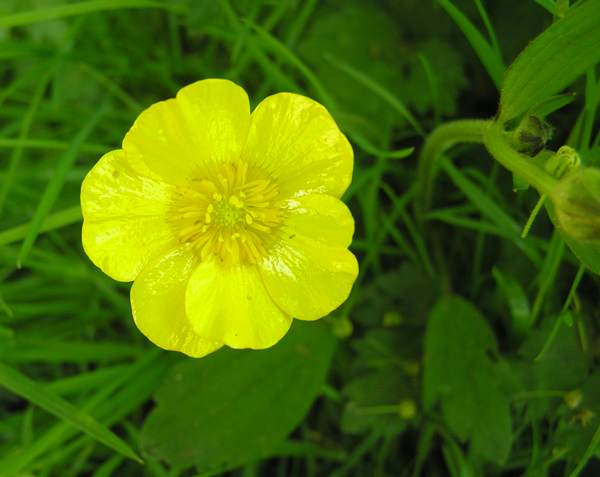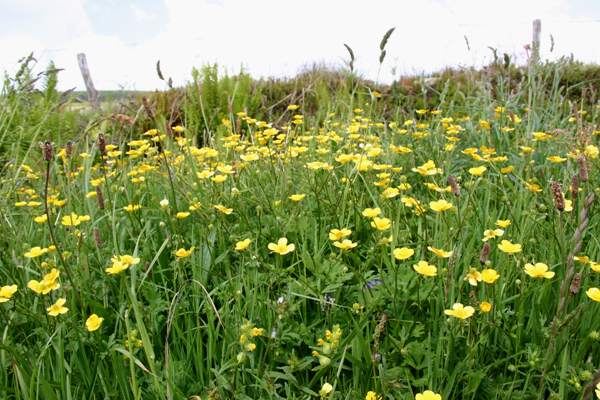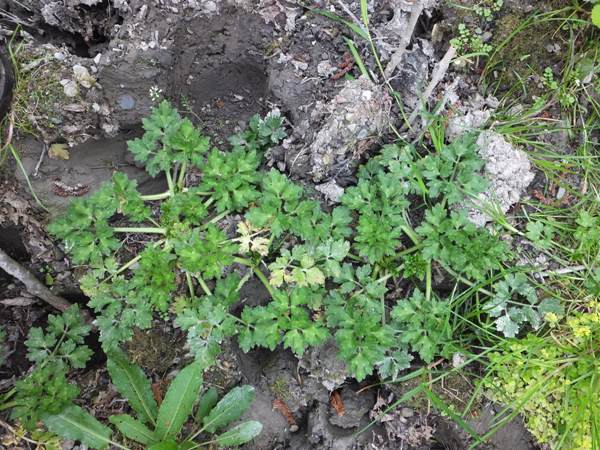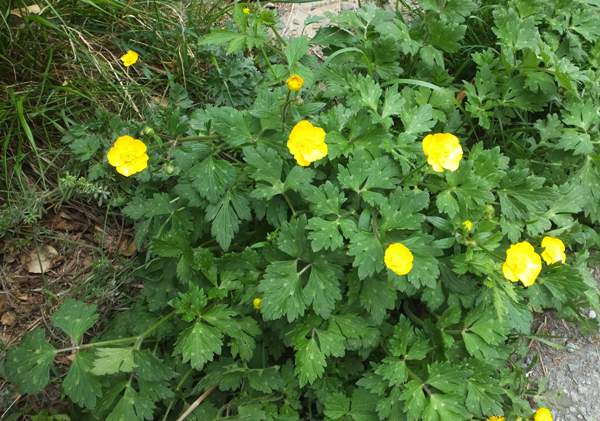Ranunculus repens - Creeping Buttercup
Phylum: Magnoliophyta - Class: Equisetopsida - Order: Ranunculales - Family: Ranunculaceae

Who is not stopped in their tracks by the sight of a beautiful buttercup meadow? Children today still play the game of finding out if their playmates like butter by holding a buttercup flower under their chin; if the golden yellow is reflected on the skin, the answer is 'Yes!'
Description
One of the best known of wildflowers, the Creeping Buttercup is a low-growing, attractive wildflower.

Creeping Buttercup usually grows to a height of about 30cm. This perennial has three-lobed hairy leaves and five-petalled (exceptionally with up to seven petals) yellow flowers 2 to 3cm in diameter are borne in small clusters.

This is Britain's only stoloniferous buttercup, and the very obvious feature of rooting unners is all you really need to see in order to separate it from other common buttercup species such as the Meadow Buttercup.
Distribution
Widespread and common throughout Britain, Ireland and most of mainland Europe, Ranunculus repens is also native to North Africa and Asia. This buttercup is also present in many other parts of the world as an introduced and widely naturalised species.

The pictures of Meadow Buttercup shown on this page were taken in West Wales during May and June.
Habitat
It's in the scientific species name, of course: these are wildflowers that spread mainly via creeping runners, known as stolons, in wet meadows, woodland edges and other damp shady places including sheltered spots under shrubs and leafy vegetables in gardens.
Blooming Times
Ranunculus repens blooms in Britain and Ireland from May until October and is generally at its most evident from May to July.
Uses
Buttercups contains an irritant latex that can cause very unpleasant reactions in farm animals and in people. The acrid taste of all common buttercup species except the Goldilocks Buttercup Ranunculus auricomus seems to be sufficient deterrent, as there have been only a few cases of serious poisoning.
There is a risk to farm animals if they are left too long in a buttercup meadow, because when there is no grass left they might have to settle for buttercups, and become very 'unsettled' as a result. Despite these safety concerns, buttercups are sometimes used in herbal treatments for arthritis, bronchitis and several other ailments. (We strongly advise against eating or using as medicines any plants without first obtaining qualified professional advice.)
Etymology
The genus name Ranunculus comes from the Latin rana, meaning frog, while the suffix -culus indicates the diminutive form - hence Ranunculus means 'little frog'. The most likely explanation is that both frogs and Ranunculus wildflower species are usually found in damp places. The specific epithet repens means 'creeping'.
Similar Species
There are many other buttercup species. Meadow buttercup Ranunculus acris is plentiful in meadows and on roadside verges, particularly on neutral to alkaline soils, while the bulbous buttercup Ranunculus bulbosus is a farmland species.
Sue Parker's latest ebook is a revised and enlarged edition of Wild Orchids in The Burren. Full details here...
Buy it for just £5.95 on Amazon...
Please Help Us: If you have found this information interesting and useful, please consider helping to keep First Nature online by making a small donation towards the web hosting and internet costs.
Any donations over and above the essential running costs will help support the conservation work of Plantlife, the Rivers Trust and charitable botanic gardens - as do author royalties and publisher proceeds from books by Pat and Sue.

